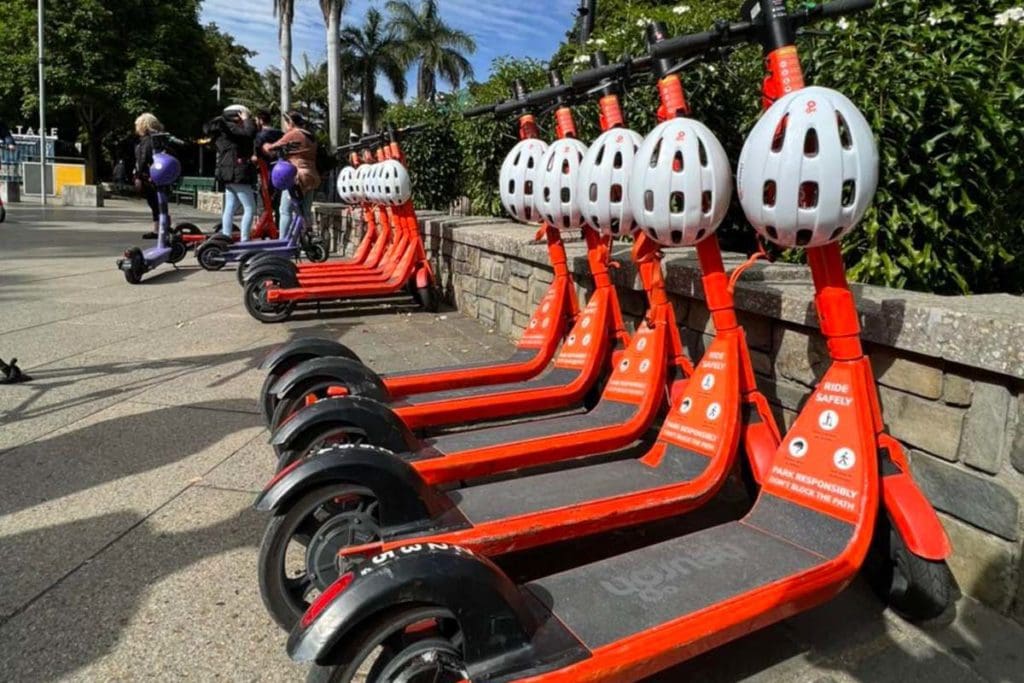New e-Scooter Regulations Unveiled in Queensland

Brisbane, Queensland
A new safety action plan for personal mobility devices has been unveiled by the Queensland Government this week, to upgrade regulation of e-scooters.
The Personal Mobility Device Safety Action Plan was released by Transport and Main Roads Minister Mark Bailey on Sunday, introducing speed limits on some footpaths, mandating warning devices such as bells, enforcement of non-complying devices, increased penalties for high-risk offences and clearer signage.
He said this initial package of actions would be in place by the end of the year and would be followed by additional measures.
An improved parking plan would be finalised over the next 12 months, produced by the Government’s Personal Mobility Device Safety Reference Group, while signage would be rolled out in specific areas during the same period.
“Getting a solution on parking is critical and that’s why we created a working group with pedestrian and disability advocates, shared scheme providers and local government representatives to work on e-scooter parking solutions for pathways around the inner-city,” the Minister said.
“This parking plan can then be adopted by councils across Queensland.
“In the long term, we want to build better active transport infrastructure, develop import rules with the federal government, and continue working with stakeholders.”
He said the plan’s initiatives would all “help deliver safer outcomes for everyone when it comes to e-scooters”.
“It’s hard to miss how successful the uptake of e-scooters has been here in Queensland, from the Gold Coast up to Cairns,” he said.
“e-Scooters are an emerging form of transport and they aren’t going anywhere – if anything, their use continues to gain popularity with those who want to leave the car at home or connect with public transport.

“That’s why it’s important we have a plan on how we improve safety for e-scooter riders, and for those who use our cycleways, footpaths and roads.”
e-Scooter symbols have already been rolled out on Brisbane’s Veloway and a combined government and industry stakeholder reference group had been established.
Harsher Penalties
High-risk offences identified for harsher penalties will include speeding, using a mobile phone while riding and riding on prohibited roads.
“Earlier this year we announced that speeds would be halved to 12 kilometres per hour on footpaths, which was a really important step in reducing dangerous, high-speed interactions between pedestrians and riders,” he said.
“This was a quick win and pushes us in the right direction to support our transition to larger regulatory reform.”
Mr Bailey said Queensland Police was supporting the reforms through behaviour blitzes, targetting speeding, using a mobile phone, carrying passengers or not wearing a helmet.
“They will be focusing on the urban areas of Brisbane where e-scooter use is particularly high.”
The proposed changes come after the State Government hosted a round table discussion on personal mobility device safety last November.
“It was very encouraging to see the willingness from stakeholders to be involved in this process and we know they’re going to play an important role in getting a lot of these actions over the line,” the Minister said.

“We’ve listened to the issues that are being raised in these conversations and the action plan represents a comprehensive approach to address them.”
The Australia and NZ general manager for share scooter provider Beam, which was involved in the reference group, has welcomed the Queensland Government’s measures.
General manager Tom Cooper said: “The safety of Beam’s riders and the wider community is of utmost importance to us, and we’re supportive of any legislative changes that ensure the safety of all who use the roads.
“We’ll continue to work closely with the State and local governments to bring the best in micromobility technology and infrastructure to Queensland.
“We are currently trialling our Pedestrian Shield technology across Australia, featuring AI-powered pavement detection in our e-scooters that will allow our vehicles to adapt their speed based on whether they’re on bike paths or footpaths, which was developed to support legislation changes as micromobility continues to be integrated into a city’s transport network.
“We will also soon introduce drink riding deterrence technology to prevent improper riding.”
